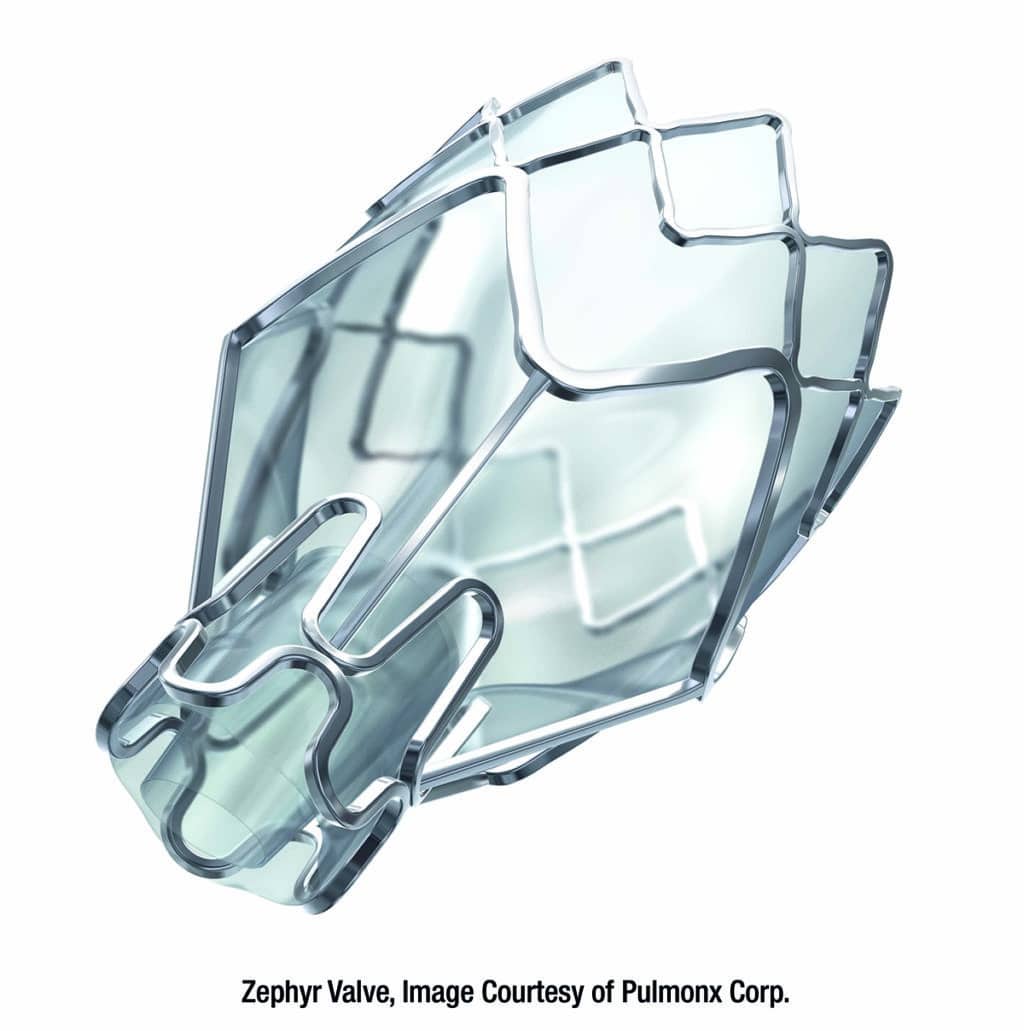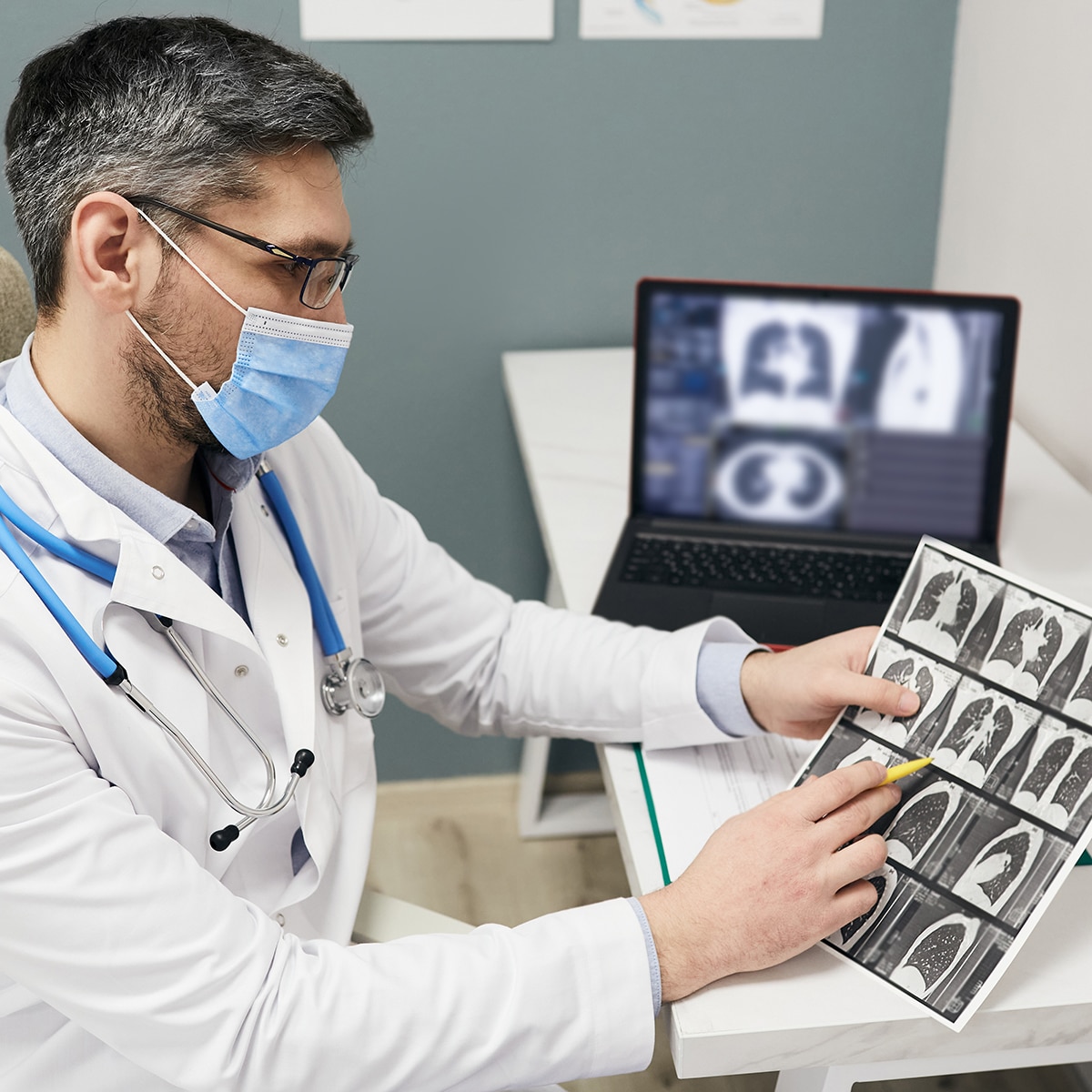
The Medical Center at Bowling Green is the first hospital in Southcentral Kentucky to offer the Zephyr® Valve. This revolutionary device can help severe emphysema patients who consistently feel short of breath despite using COPD medications and/or oxygen. Zephyr is the first FDA-approved, minimally-invasive device available in the U.S. for treating patients with severe emphysema.
Patients report being able to take full breaths immediately after the procedure and within a few days are back to doing everyday tasks with ease. In clinical studies patients treated with Zephyr® Valves have been shown to:
- Breathe easier
- Be more active and energetic
- Be less short of breath
- Enjoy a significantly improved quality of life compared to untreated patients.
What is the Zephyr Valve?

The Zephyr® Valve is the first minimally-invasive option for patients with severe emphysema/COPD. Severe emphysema causes extreme shortness of breath and often requires the use of daily oxygen. Patients with severe emphysema have lung tissue that has been destroyed and leads to hyperinflation, where air becomes trapped in the lungs, making it difficult to breathe. Despite taking the best available medications, patients often have difficulty doing even the simplest tasks like showering or walking up a flight of stairs. The Zephyr Valve, placed through a simple bronchoscopy procedure, reduces this hyperinflation, which results in patients being able to breathe more easily and experience less shortness of breath.
How does the Procedure Work?
The procedure is done during a bronchoscopy that requires no cutting or incisions. During the procedure, on average 4 tiny valves are placed in the airways of a section of the lung, allowing the diseased portion to deflate. The valves reduce hyperinflation, preventing air from being trapped in the diseased area of the lung and allowing healthier parts of the lung to take in more air. This results in patients being able to breathe easier. Patients treated have reported immediate relief.

What can Patients Expect?
A typical Zephyr® valve procedure looks like this:
- The doctor will give you medicine to make you sleepy.
- A small tube with a camera, called a bronchoscope, will be inserted into your lungs through your nose or mouth.
- During the procedure on average the doctor will place 4 Zephyr Valves in the airways.
- You will stay in the hospital for approximately 3 nights for observation.
- After the procedure, you will continue to use the medicines that your doctor has prescribed for your condition.




